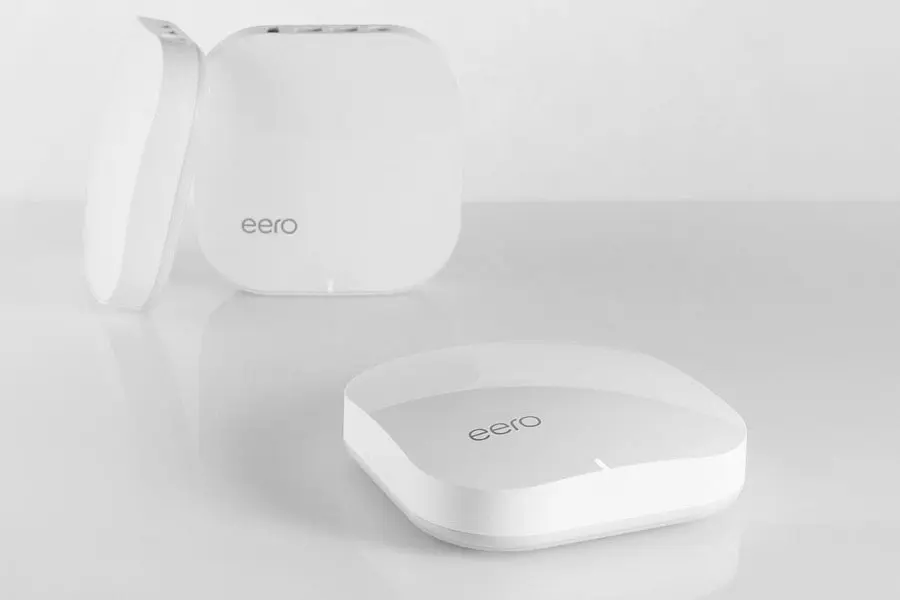For a technology that tends to gather dust behind TV stands or inside closets, the wireless router has gotten a lot of attention lately.
In 2016, innovative new routers came from such well-known companies as Google and Netgear, and from startups including Eero, Plume, Starry, and Almond. Their stated purpose is to transform Wi-Fi from something you tolerate into something you love, whether it’s through simplified setup, superior coverage, hardened security, or eye-catching design.
But a better Wi-Fi experience might not be the only objective. Many of these companies see Wi-Fi as a stepping stone to bigger plans, in which the router becomes a platform for new kinds of services. So if you think the router revival is interesting now, wait until you see what happens in the next few years.

Break The Bottleneck
The router renaissance is due to a couple of factors. One: People are demanding more bandwidth for streaming video services; and two: They are connecting more devices overall, including smartphones, tablets, streaming TV boxes, connected speakers, smart thermostats, smart lighting, and networked security cameras.
While internet speeds have increased to accommodate these advances, the router is becoming a bottleneck. A typical $100 router may have blind spots where the connection becomes slow or unreliable, and it doesn’t give much useful feedback when something goes wrong.
“What I had noticed was, the number of people who were having problems, and the urgency around getting it resolved, had just started to really skyrocket,” says Nick Weaver, Eero’s CEO and cofounder.

Eero users install multiple routers around the house, which creates a single “mesh” network that can reach into dead zones. Set-up is supposed to be easier than traditional wireless range extenders, and it doesn’t require separate login credentials for each access point. Eero launched in February, and has seen several new competitors emerge—Luma, Netgear’s Orbi, Google WiFi, and Plume among them.
Although mesh networking isn’t a new technology, Weaver says the cost of Wi-Fi radios has decreased, so systems with multiple access points are becoming more practical just as people are starting to need them. Cloud computing has also become cheaper and more reliable, Weaver says, so router-makers can analyze the data to improve their systems over time. Eero, for instance, just released a new version of its mesh network based on what it learned from existing device performance, and it can double the connection speeds between routers.
“There’s a lot of new technology available that allows this kind of large-scale data analysis to be something you can run with a company of 130 people, whereas before you might need 130 people just to manage your data infrastructure,” Weaver says.

Plume is also leaning on the cloud for its Wi-Fi pods, which sell in three- and six-packs and plug directly into power outlets. Instead of managing connections locally, Plume analyzes the data on its remote servers, deciding how best to distribute bandwidth to each room.
“We have very much a central control plane that sits on the cloud and uses a lot of cloud computing,” Plume CEO Fahri Diner says. “That enables us to have these devices that are small and beautiful, and lower-cost than others.”
Starry, meanwhile, wanted to take troubleshooting into its own hands with its touchscreen Starry Station router. Each device is displayed as an icon, with larger ones representing greater data use and red ones indicating connection problems. It also tells users in plain English when there’s a problem with the internet, offers parental controls, and includes a way to request tech support by phone.
“The internet service company wasn’t necessarily excellent at supporting this consumer, so I think there’s a big consumer experience opportunity,” says Alex Moulle-Berteaux, Starry’s chief marketing officer and head of product.
Router-As-A-Platform
Today, companies like Starry, Plume, and Eero are merely trying to deliver better Wi-Fi. But in the future, their hardware could begin to serve broader ambitions.
Eero, for instance, packs a lot of power and storage into its routers that aren’t being used to their full potential. Although Weaver won’t say specifically how that extra power might be used, he notes that a virtual assistant like Amazon’s Alexa might respond much faster if the command is processed locally. He says there are some “pretty interesting things you can do” when you have a distributed system for always-on networking, computing, and storage in your home. “If you look at this thing as just a Wi-Fi device, you’re not really looking at the whole picture.”
Plume also sees its network of Wi-Fi pods as a gateway to more smart home services. If there’s a router in each room, as Plume recommends, one might imagine pressing a button on the nearest pod to bring a new smart light bulb or door lock online. Future Plumes might even have their own sensors to detect when someone has walked in.
“If you have this underlying network where Wi-Fi is everywhere, where Wi-Fi is smart and controlled, then you get to imagine these kinds of services that come over the top,” Diner says.
That pitch might prove compelling to internet service providers, for whom Wi-Fi is already a major source of customer service complaints. A system like Plume could not only cut down on costly technician visits, but open the door to new home automation services. Major ISPs such as Comcast are already dabbling in smart home offerings, as they try to avoid becoming dumb pipes for internet service.
“Basically, it’s an extension of their broadband infrastructure that they need to be in control of, so they’re very interested in it,” Diner says. (Liberty Global, the largest ISP outside the United States, is a Plume investor.) That’s why Plume is hoping to offer its router system directly through internet service providers.
As for Starry, it’s hoping to become an internet service provider itself. The company has been testing internet service in Boston that beams to apartment buildings through a roof-mounted receiver, then uses existing wiring to hook up with Starry Station routers in each residence. When the internet service launches, it’ll include a Starry Station router, and won’t even work with other routers at first.
“It’s really important to us that we manage the entire stack, the entire chain, and so understanding what the ultimate performance is inside the home is critical to delivering a great service,” Moulle-Berteaux says.

The Starry Station router could also become a platform for other smart home services. It’s based on Android, and Moulle-Berteaux says the touchscreen could eventually serve as an intercom, a video chat device, or a way to see who’s at the door when someone rings a connected doorbell. He notes that the current hardware has a Bluetooth radio, a microphone, and a speaker that are currently laying dormant.
“We are thinking about it as a platform,” Moulle-Berteaux says. “The kinds of devices and usage patterns that exist are ripe for thinking about software features.”
These ambitions may explain why a company like Google is suddenly interested in making its own routers, and it adds some mystery to the rumor that Apple has disbanded its own router team. But none of it matters unless the products succeed as routers first. Otherwise, there’s no foot in the door for new kinds of router-based services.
“It’s a startup and we have to be sure we don’t boil the ocean,” Diner says. “So we make sure we’re really focused on Wi-Fi performance as the meat and potatoes, if you will.”
Recognize your brand’s excellence by applying to this year’s Brands That Matter Awards before the early-rate deadline, May 3.
